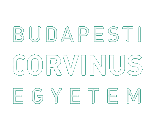Gáspár, Domonkos Pál (2024) Business driven method for managing business process changes in the era of digitalization. Doktori (PhD) értekezés, Budapesti Corvinus Egyetem, Közgazdasági és Gazdaságinformatikai Doktori Iskola. DOI https://doi.org/10.14267/phd.2024057
Teljes szöveg
|
PDF : (dissertation)
3MB | |
|
PDF : (draft in English)
1MB | |
|
PDF : (az értekezés tézisei magyar nyelven)
1MB |
Hivatalos URL: https://doi.org/10.14267/phd.2024057
Kivonat, rövid leírás
The problem setting of the research lays in my 20+ years of experience in the practice: the lack of theoretical and practical support for the operationalization of the change management on digitalization initiatives. Even in literature, the area is under-studied especially the practical aspects of the organizational change management: processing only information natively available to the practice and deliver tailored pragmatic action requirement for change execution. I become curious how previous research results of the institute could form the basis of a change management support model and tool ecosystem. The novelty of the research lies in the operationalization of change management in business processes. By comparative analysis and further elaboration of information in process models and descriptive text formats, and by exploiting the scientific field of organizational change management, the result of the comparative analysis is used to provide tailored, practical recommendations for operational change management of business processes. This exploratory, interdisciplinary research conducted with two industrial partners contributes to closing this research gap and seeks to deliver useful results both in theoretical and practical spheres. It centers around the following main research themes: • Analysis of the context of business processes, business process models and business process lifecycle as well as the context of organizational change management • Context of Business Process compliance with respect to the extraction of process information from textual process descriptions • Extraction of information from business process models and transforming to a data structure that can facilitate other inputs as well • Comparative analysis of process information from different sources, possibilities for enhancing the results with practical guidance on change management for change managers Methods and results The initial problem has been addressed by the development of a solution whose architecture transforms business process models and textual process descriptions to process ontology, allowing comparison of the attributes. To the end of textual process descriptions: a text analysis module has been developed that allows finding process attributes by extracting and tagging entity-relation-objects and subsequently, via the use of Naïve Bayes method, evaluate the probability that a word referring to a relation is followed by one of the attributes. The hit rate of the algorithm achieved accuracy scores of 87.27% and 66.67% for Documents and Roles respectively. To reduce the noisiness of the results, thus exclude irrelevant differences, text similarity analysis has been conducted with different text similarity algorithms. The best results have been achieved with the Jaccard method (75%), that similarity checks can be a meaningful way to address noisiness of text analytics results. Irrelevant differences are tackled through the defined Translation table, into which the text similarity analysis contributes to as well. Practical usefulness has been achieved by linking the result of the comparative ontology analysis to actual change management action recommendations through the development of a Recommendation Library which contains configurable suggestions conditional to the attribute change as well as to the change management stage, coming from the applied organizational change management model. It was in our case ADKAR; however, the tool is flexibly adaptable. Contribution The research has delivered advancements in multiple areas: 1. It has developed and proved feasibility of a tool ecosystem that can integrate and processing information from different sources such as business process models and textual process descriptions allowing comparison of the attributes. 2. Integrates the scientific domain of change management to turn the process comparison results to situational, tailor made, actionable change management action recommendation. 3. Introduces progress in the domain of text analytics to extract process information from textual process description through the specification of an algorithm and a noise reduction of the finding on small corpora, specific language text base.
| Tétel típusa: | Disszertáció (Doktori (PhD) értekezés) |
|---|---|
| Témavezető: | Ternai Katalin |
| Tárgy: | Innováció, tudásgazdaság |
| Azonosító kód: | 1380 |
| Védés dátuma: | 15 november 2024 |
| DOI: | https://doi.org/10.14267/phd.2024057 |
| Elhelyezés dátuma: | 02 Jul 2024 08:18 |
| Last Modified: | 19 Dec 2024 13:43 |
Csak a repozitórium munkatársainak: tétel módosító lap

 Letöltési statisztika
Letöltési statisztika Letöltési statisztika
Letöltési statisztika